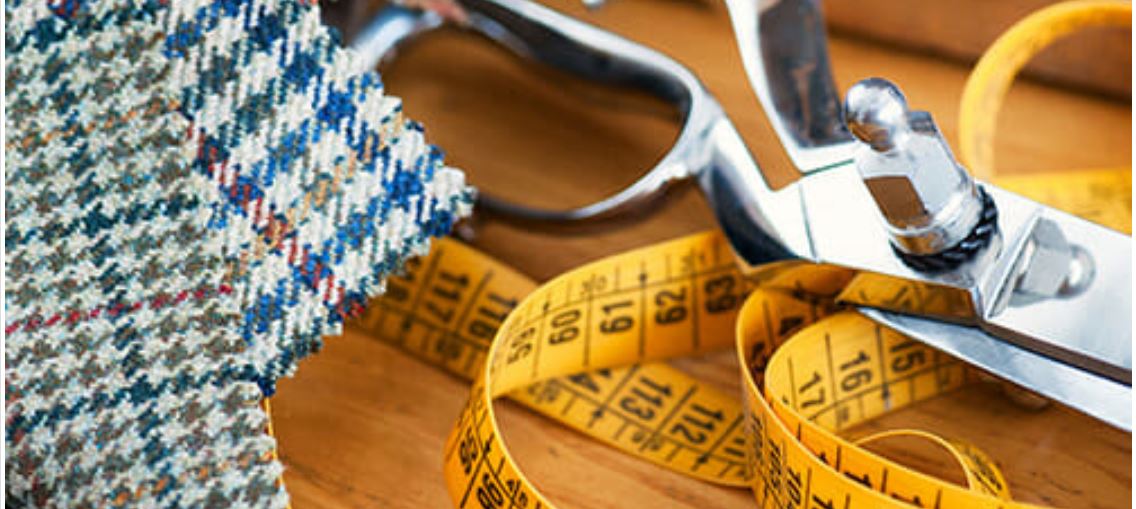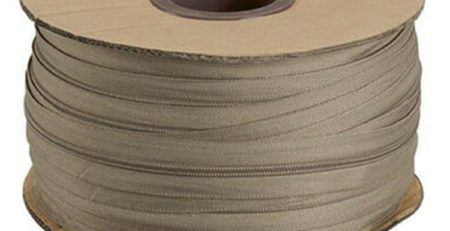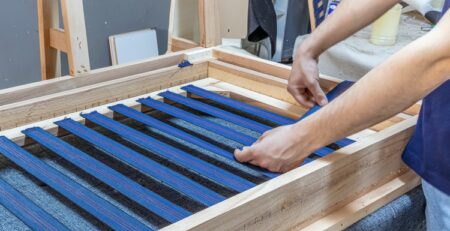Guide To Upholstery Supplies & Sundries
Covers, springs, stuffing’s and liner and webs… Webbing, covers, stuffing’s a myriad of upholstery products including sundries and fabrics you’ll find at a fundamental level. The choices can seem interminable and too overwhelming, which is why I thought it would be helpful to go over the fundamentals. The selection of the appropriate materials is an essential part of the process of getting a perfect finishing.
Arm chair , ready to be reupholstered with upholstery materials and sundries
Linings
Calico
It is, perhaps, the most common upholstery liner. The use of calico prior to your top fabric will mean you can test the tension, practice cutting and evaluate the ease of your work. It also assists in keeping dust from seats and extend the lifespan of your upholstery. In short, lining the seat with an acetate fabric gives a more attractive look to your furniture.
Hessian
Hessian is used in almost all upholstery projects, contemporary and traditional. It is available in a variety of weights and is used on springs as well as the backs, arms and seats of smaller chairs. It is also utilized as a floor cloth.
Scrim
Linscrim, also known as a scrim or linen fabric is loose open-weaved material used for upholstery in traditional fashion. It is extremely durable and fine It is utilized on the upper layer of stuffing.
FR barrier cloth
This wool felt interlining will guarantee that, if needed, your furniture is compliant with present British Standards. The wool/felt blend is naturally fire-resistant instead of being treated with any chemical – and can be utilized as a barrier fabric in conjunction with fixed upholstery fabrics that isn’t fire retardant. The lining runs in between upholstery fabrics and the furniture base to meet British Standards. However, be aware that it isn’t appropriate for all fabrics. According to their composition certain fabrics may need being treated by the manufacturer separately in order to make them fire-proof.
Click here for all your supplies upholstery.
Liner / bottom cloth
A 50/50 cotton and 50% polyester fabric is placed on the chair’s base when a cushion is utilized and/or on the back of the chair, to keep it neat and create dust barriers. It also covers the inside of the piece to give a professional look.
Webbing is the basis of all high-quality, comfortable furniture. The strong, tightly knit fabric is employed to support the backs and arms of chairs. I’ve listed the major kinds below.
Webbing that is white and black
Also called English webbing or herringbone, this premium upholstery webbing is constructed from cotton and jute in a sturdy weave. It’s ideal for seating or projects that require sturdy support.
Jute webbing
Although not as robust like herringbone, the is stretched across the back, arms and the wings of furniture frames.
Elasticated webbing can be found in a variety of strength levels, allowing you to pick the best tension for your needs (i.e. to be used as an armchair or seat or chair back, or arm). Its flexibility means that it can be manufactured with a soft or firm support or feel, based on the preference you have.
Pirelli webbing is constructed of natural rubber. It is it is held in place by wooden dowels or clips that are usually placed to grooves. It is also possible to fix it directly to a rail using staples or tacks when there aren’t grooves. Pirelli webbing is almost always utilized on furniture manufactured by Ercol.
Springs
Sofas and chairs aren’t fully complete without the springs within the cushions that give them their comfortable feel. Spring cushions are placed under the seat and , sometimes, in the back or on arms to help soften the cushions.
Cone springs
Cone Springs are used throughout upholstery as well as high-end contemporary furniture.
There are a variety of types of gauges (thickness) of wire that you will need to use based on the task:
9 gauge (3.65mm) is used to make chairs and sofas.
10-gauge (3.25mm) can be used to make dining chairs, small chair seats , and sofa backs.
12-gauge (2.64mm) The most thin, is the one used for armrests on chairs and sofas.
Zig-zag seat springs are commonly used in modern sofas and chairs.
Tension springs
A plastic Coated Tension Springs are commonly utilized for Parker Knoll furniture amongst other kinds of chairs.
Stuffing’s
Foam
Upholstery foam is one of the groups made up of polyurethane that is flexible and comes in different thicknesses and grades. They are sold in sheets beginning around 1/16″ inches (quarter). It is available in various colours, which indicate the various densities.
The blue and the chip foam are the most dense and most durable, making ideal for footstools as well as headboards. The foam reduces in the density, and becomes less durable. Density of foam is among the main factors determining the longevity and comfort of your home.
Hair with rubberized texture
A mix of Coir (coconut the husk) naturally latex and horsehair, set into rubber to create sheets one inch thick.
Coir fibre
Coir, also known as coconut fibre is a natural fibre that is extracted from the outer coconut husk, ideal for the first filling layer. It is also used to fill the seats and armrests in traditional furniture.
Animal hair
The most frequently used hair in upholstery is currently 100% natural animal hair (80 percent pig and 20 percent horsemen). It is extremely soft and easy to work with, and is ideal for the next coat of stuffing.
Polyester wadding/Daron
The cotton wool that is synthetic comes in sheets with 27″ or 54″ widths, and comes in a range of weights. The more weight you use and the greater the thickness of the wadding. It is possible to use it in the smallest amount as a skin layer between the top and lining fabric or on furniture prior to applying the top fabric. It can also be used to wrap around foam cushions.
Cotton wadding
It is an mixture composed of natural wool layered with cotton felt, which is also referred to as white felt or flock. It is utilized to create arm and seat padding as well as wrap-around spring cushion inners and also as the final padding layer to stop horsehair or fibre filling from escaping. It is commonly used in antique furniture restoration.





